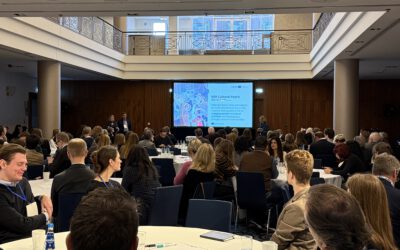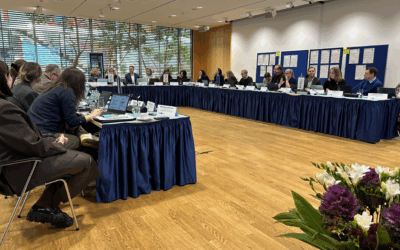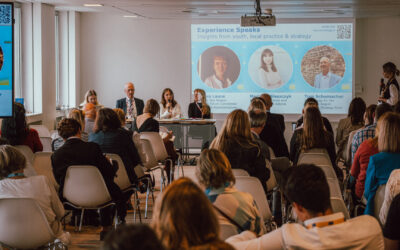Angling can help increase local fish populations while offering new local business opportunities. The Interreg project RETROUT boosted coastal fishing tourism. It helped local fishing guides to develop their destinations and restored sea trout rivers in six countries within the Baltic Sea region.

©Pixabay
The value of environmental restoration for the tourism business
Sea trout spend their adult life in the sea but reproduce in rivers. The juvenile fish grow up in the river, and after a couple of years they return to the sea. Therefore, free passage in rivers and suitable nursery areas are fundamental for thriving sea trout populations. However, most, if not all, Baltic Sea rivers are heavily affected by human interventions, e.g. channelisation and constructions such as mills, dams or hydroelectric power plants. This is detrimental to the life of plants and animals in the rivers and has resulted in weak populations of sea trout and other river dwelling animals. “An investment in the environment is an investment in the tourism business”, explains Håkan Häggström, a biologist and lead partner of the Interreg project RETROUT “By restoring river habitats to more natural conditions, fish populations can increase, which attract more angling tourists.”
So, efficient restoration of rivers all around the Baltic Sea is an opportunity to attract more tourists and boost local businesses. The economic value of a fish caught by an angler is up to 10 times higher than a fish caught by a commercial fisherman.
Despite the high economic potential, the restoration efforts around the Baltic Sea region are only making slow progress. As a researcher, Håkan Häggström wanted to understand the root causes of this situation. He looked for partners all around the region to jointly locate the challenges and to create solutions to improve the life of fish in local rivers.
Speeding up the river restoration processes
15 pilot cases in 11 coastal rivers in Estonia, Lithuania, Latvia, Poland and Sweden demonstrated how to. These pilots included interventions such as fish passes, biotope restorations, water quality improvement, anti-poaching campaigns and dam removal plans. In addition, the project analysed close to 100 completed or failed river restoration projects in all Baltic Sea countries to identify success factors and pitfalls.
The collected results formed the basis for best practice recommendations for river restoration projects. One of the most important identified factors contributing to a successful river restoration was continuous communication with stakeholders. It helps create ownership and trust to better anchor the restoration work in the community. Another important factor was to have experts in the fields of river restoration, fish biology, cultural heritage, water resources management and environmental communication overseeing the entire restoration process.
In a separate study, the partnership examined existing gaps between rivers’ actual trout population and their reproduction potential. The results were used to develop a blacklist of rivers presenting the largest gaps, including 67 rivers with unexpectedly low trout populations. These findings require further investigation for the researchers to determine which challenges trout are facing in these rivers, how to tackle them and ultimately exploit the rivers’ full reproduction potential.
Is sport fishing shrinking the local fish population?
When restoring rivers’ natural habitats fish populations increase, allowing increased angling. The incentive of business opportunities in fishing tourism can even motivate local stakeholders to take good care of the rivers’ natural habitats, with an overall positive impact on the fish population.
RETROUT strengthened sustainable fishing tourism with its “Baltic Sea Fishing” group. They created an ethical code for sport fishing, encouraging moderate fishing for consumption and specifying strict bag limits. This means, among other things as Håkan Häggström explains, that we promote catch-and-release fishing which means careful handling of the fish before it is released again.
Building up fishing tourism destinations
To strengthen fishing tourism, the RETROUT partnership has created clusters of small businesses in the tourism sector in Stockholm archipelago in Sweden, the coastal region of Lahemaa in Estonia, Kurzeme region in Latvia, Klaipeda in Lithuania and Gulf of Gdansk in Poland.
Additionally, project partners created a network of fishing guides and service providers all around the Baltic Sea. These guides are not merely taking tourists to the best fishing sites, but understand themselves as ambassadors on sustainable fishing.
Fishing tours in five tourism destinations in Sweden, Estonia, Latvia, Lithuania and Poland can be booked on the website of Baltic Sea Fishing, where readers can find as well the ethical code for fishing under the Baltic Sea Fishing label.
Future of river restoration
As the river restoration potentials are discovered, Håkan Häggström hopes that the RETROUT report’s best practices will be used in the whole Baltic Sea region also thanks to the collaboration with larger organisations like the Baltic Marine Environment Protection Commission (Helsinki Commission – HELCOM). The report’s results will be summarised into a general HELCOM recommendation in the next years. The work cannot stop there, however. The RETROUT partnership hopes to get the practices down to practitioners all around the area, for the collected knowledge to be used by local and regional authorities. After all, a river as an ecosystem provides services to angling tourism and so profits local economy.
Article by Håkan Häggström, County Administrative Board of Stockholm with support of the Communication team of Interreg Baltic Sea Region Managing Authority Joint Secretariat






